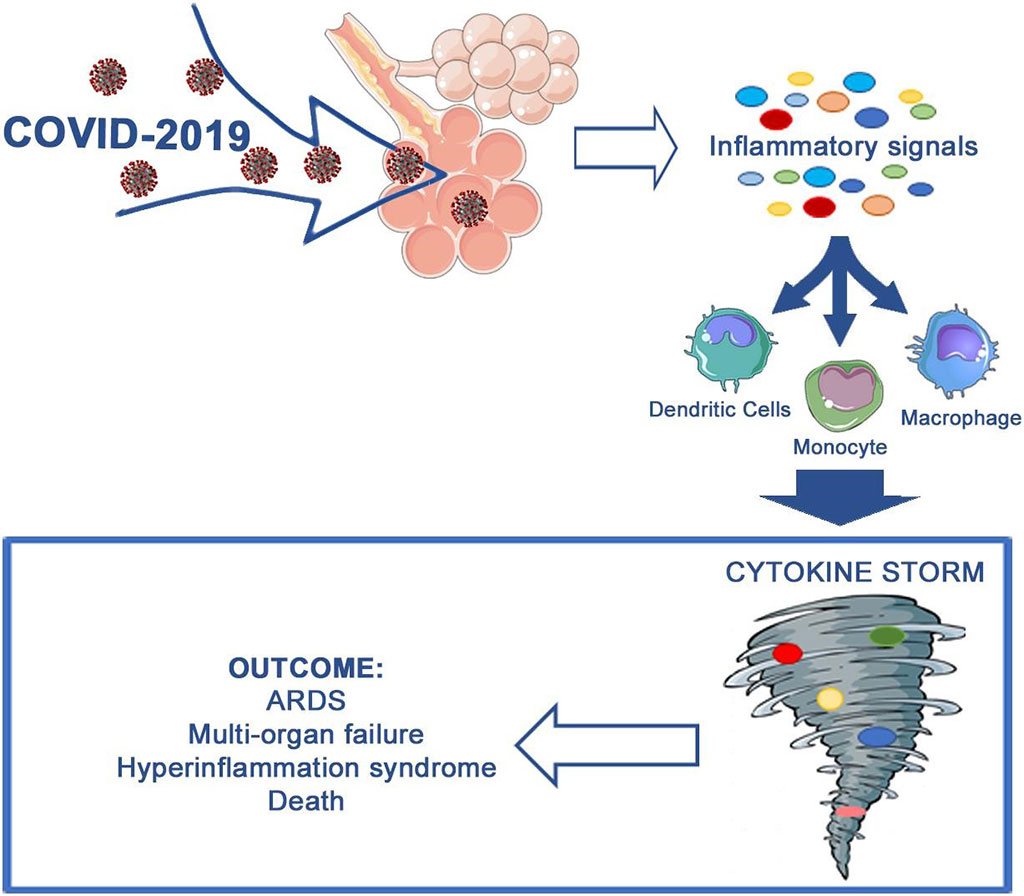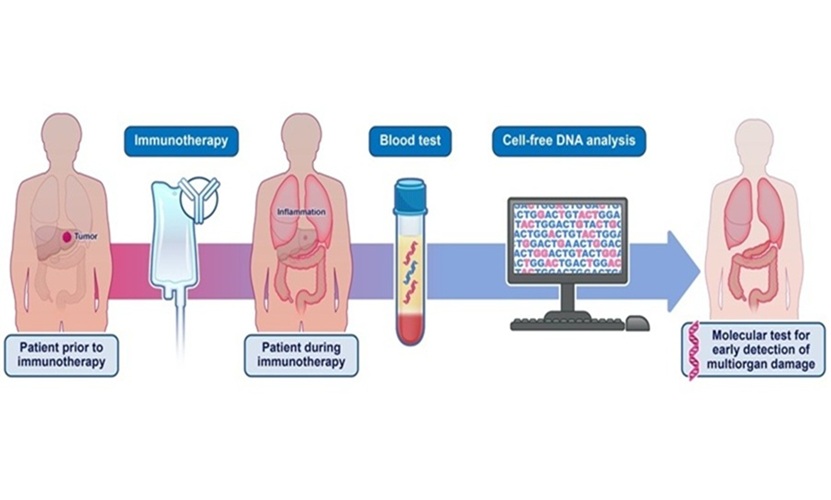Preliminary Predictive Criteria Identified for COVID-19 Cytokine Storm
By LabMedica International staff writers
Posted on 05 Jan 2021
While most of cases of COVID-19 are mild, a sizeable number of patients develop a severe acute hyperimmune response characterized by a cytokine storm (CS). Two forms of CS, hemophagocytic lymphohistiocytosis (HLH) and macrophage activation syndrome (MAS), rely on well-established criteria to identify their occurrence. Posted on 05 Jan 2021
Results from recent reports suggest that COVID-19-associated CS is a unique form of a hyperinflammatory response, which needs further clinical and laboratory characterization as well as classification criteria. Reports from COVID-19 cohorts and autopsies highlight significant diffuse inflammation and widespread tissue damage, such as renal, cardiac and muscular damage, in addition to pulmonary impairment.

Image: Preliminary Predictive Criteria Identified For COVID-19 Cytokine Storm (Photo courtesy of University of L’Aquila).
Clinical Scientists from Temple University Hospital (Philadelphia, PA, USA) and their international colleagues studied 513 patients with a confirmed diagnosis of COVID-19 admitted from March 10 to April 1, 2020. All included patients had been hospitalized for up to one week prior to enrollment and demonstrated ground-glass opacity by high-resolution computerized tomography of the chest, as well as a reverse transcriptase PCR for COVID-19 RNA.
The team analyzed laboratory results for the first seven days of hospitalization for each patient and used logistic regression and principal component analysis to determine the predictive criteria. They then used a “genetic algorithm” to find the cutoffs for each laboratory result. They validated the criteria with a second cohort of 258 patients admitted from 18 April 2020 to 30 April 2020 The criteria included a newly devised consensus was based on worsening respiratory and elevation above threefold the upper normal level of at least two of the following markers: C reactive protein (CRP), ferritin, D-dimer, lactate dehydrogenase (LDH) and cardiac troponin.
The investigators reported that the criteria for macrophage activation syndrome, hemophagocytic lymphohistiocytosis and the HScore failed to identify cytokine storm associated with COVID-19. Instead, they used new criteria that included three clusters of laboratory results. These involved inflammation, cell death and tissue damage, and prerenal electrolyte imbalance. These criteria demonstrated a sensitivity of 0.85 and a specificity of 0.8. In addition, they were able to identify patients with longer hospitalization and increased mortality.
The COVID-cytokine storm (CS) group had significantly higher levels of ferritin, CRP and triglycerides, and decreased levels of albumin, all signs of systemic inflammation. Ferritin showed an odds ratio (OR) of 14, indicating an important role in COVID-CS. Strong inflammation was confirmed by the level of interleukin-6 (IL-6), which was elevated in most patients with COVID-19, but significantly higher in COVID-CS (35 pg/mL versus 96 pg/mL). The white blood cells, and especially neutrophils and monocytes, were significantly increased in the COVID-CS group, suggesting an active role of the innate immunity in the storm. The lymphocytes instead were decreased, with averages half of the normal lower limit, suggesting a functional depletion of the adaptive immunity.
Roberto Caricchio, MD, FACR, a Professor of Rheumatology and senior author of the study, said, “Interestingly the criteria could be grouped in three major pathological aspect of COVID-19 disease: inflammation, cell death and tissue damage and prerenal electrolyte imbalance. The patients who met the criteria had three times longer length of hospitalization and six times higher mortality. Importantly the vast majority of patients who met the criteria, did so within the first seven days and half of them at the time of admission. Therefore, the criteria are able to identify the cytokine storm very early during hospitalization.” The study was published on December 14, 2020 in the journal Annals of the Rheumatic Diseases.
Related Links:
Temple University Hospital




 assay.jpg)









